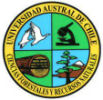28. Labbé, R., Niklitschek M., Contreras, M. 2023. Effect of climate change on the land rent of radiata pine plantations in Chile: Site productivity and forest fires. Forest Policy and Economics 156:103068. (PDF) (Link)
27. Sena, K., Ochuodho, T.O., Agyeman, D.A., Contreras, M.A., Niman, C., Eaton, D., Yang, J. 2022. Wood bioenergy for rural resilience: Suitable site selection and potential economic impacts in Appalachian Kentucky. Forest Policy and Economics 145:102847. (PDF) (Link)
26. Contreras, M.A., Staats, W.A., Price, S.J., 2020. Predicting and mapping Plethodontid salamander abundance using LiDAR-derived terrain and vegetation characteristics. Forest Systems 29(2):S005 (PDF) (Link)
25. Contreras, M.A., Parrott D.L., Stringer J.W., 2020. Retroactive comparison of operator-designed and computer-generated skid-trail networks on steep terrain. Forest Systems 29(1):eSC01 (PDF) (Link)
24. Ferreira, M.A., Silva, C.S.J., Gomide, L.R., Contreras, M.A., Lopes, E.T., Rodrigues, R.C., Mello, J.M., Mendonça, N.P. 2019. Wood supply optimization in Brazilian pulp industry involving forestry outgrower scheme. Revista Árvore 43(5):e430504 (PDF) (Link)
23. Hamid, H., Jacobs, N.B., Contreras, M.A., Clark, C.H. 2019. Deep learning for conifer-deciduous classification of airborne LiDAR 3D point clouds representing individual trees. ISPRS Journal of Photogrammetry and Remote Sensing 158:219-230. https://www.sciencedirect.com/science/article/pii/S0924271619302485 (PDF) (Link)
22. Hamraz, H., Contreras, M., Zhang, J. 2017. Forest understory trees revealed within sufficiently dense airborne laser scanning point clouds. Scientific Reports 7:6770. (PDF) (Link)
21. Hamraz, H., Contreras, M., Zhang, J. 2017. Vertical stratification of forest canopy for segmentation of under-story trees within small-footprint airborne LiDAR point clouds. ISPRS Journal of Photogrammetry and Remote Sensing 130:385-392. (PDF) (Link)
20. Contreras, M., Staats, W., Yang, J., Parrott, D. 2017. Quantifying the accuracy of LiDAR-derived DEM in deciduous eastern forests of the Cumberland Plateau. Journal of Geographic Information System 9:339-353. (PDF) (Link)
19. Lin, P., Dai, R., Contreras, M.A., Zhang, J. 2017. Combining ant colony optimization with 1-opt local search method for solving constrained forest transportation planning problems. Artificial Intelligence Research 6(2):27-38. (PDF) (Link)
18. Hamraz, H., Contreras, M., Zhang, J. 2017. A scalable approach for tree segmentation within small-footprint airborne. Computers and Geosciences 102:139-174. (PDF) (Link)
17. Contreras, M., Freitas, R., Ribeiro, L., Stringer, J.W., Clark, C. 2017. Multi-camera surveillance systems for time and motion studies of timber harvesting equipment. Computers and Electronics in Agriculture 135:208-215. (PDF) (Link)
16. Hamraz H., M. Contreras, J. Zhang. 2016. A rubust approach for tree segmentation in decidouos forests using small-footprint airborne LiDAR data. International Journal of Applied Earth Observation and Geoinformation 52: 532-541 (PDF) (Link)
15. Lin P., M. Contreras, R. Dai, J. Zhang. 2016. A multilevel ACO approach for solving forest transportation planning problems with environmental constraints. Swarm and Evolutionary Computation 28: 78-87 (PDF) (Link)
14. Qi L., J. Yang, D. Yu, L. Dai, M. Contreras. 2016. Responses of regeneration and species coexistence to single-tree selective logging for a temperate mixed forest in eastern Eurasia. Annals of Forest Science 73(2): 449-460 (PDF) (Link)
13. Contreras M., D. Parrott, W. Chung. 2016. Designing skid-trail networks to reduce skidding cost and soil disturbance for ground-based timber harvesting operations. Forest Science 62(1):48-58 (PDF) (Link)
12. Nepal S., M. Contreras, G.A. Stainback, J.M. Lhotka. 2015. Quantifying the effects of biomass market conditions and policy incentives on economically feasible sites to establish dedicated energy crops. Forests 6(11):4168-4190 (PDF) (Link)
11. Lin P., J. Zhang, M. Contreras. 2015. Automatically configuring ACO using multilevel ParamILS to solve transportation planning with underlying weighted networks. Swarm and Evolutionary Computation 20:48-57 (PDF) (Link)
10. Nepal S., M. Contreras., J.M. Lhotka, G.A. Stainback. 2014. A spatially explicit model to identify suitable sites to establish dedicated woody energy crops. Biomass and Bioenergy 71:245-255 (PDF) (Link)
9. Vallejos-Barra O., G. Daniluk-Mosquera, G. Moras, M. Ponce-Donoso, M. Contreras. 2014. Above-ground carbon absorption in young Eucalyptus globulus plantations in Uruguay. Scientia Forestalis v.42, n.101, p. 9-19 (PDF) (Link)
8. Chung W., G. Jones, K. Krueger, J. Bramel, M. Contreras. 2013. Optimizing fuel treatments over time and space. International Journal of Wildland Fire (PDF) (Link)
7. Contreras M., W. Chung. 2013. Developing a computerized approach for optimizing tree removal to efficiently reduce crown fire potential. Forest Ecology and Management 289(1):219-233 (PDF) (Link)
6. Contreras M., P. Aracena, W. Chung. 2012. Improving accuracy in earthwork volume estimation for proposed forest roads using a high-resolution digital elevation model. Croatian Journal of Forest Engineering 33(1):125-142 (PDF) (Link)
5. Contreras M., R. Parsons, W. Chung. 2012. Modeling tree-level fuel connectivity to evaluate the effectiveness of thinning treatments for reducing crown fire potential. Forest Ecology and Management 264(2)134-149 (PDF) (Link)
4. Contreras M., D. Affleck, W. Chung. 2011. Evaluating tree competition indices as predictors of basal area increment in western Montana forests. Forest Ecology and Management 262(12):1939-1949 (PDF) (Link)
3. Contreras M., W. Chung. 2011. A modeling approach to estimating skidding costs for individual trees for thinning operations. Western Journal of Applied Forestry 26(3):133-146 (PDF) (Link)
2. Contreras M., W. Chung, G. Jones. 2008. Applying ant colony optimization meta-heuristic to solve forest transportation planning problems with side constraints. Canadian Journal of Forest Research 38(11):2896-2910 (PDF) (Link)
1. Contreras M., W. Chung. 2007. A computer approach to finding an optimal log landing location and analyzing influencing factors for ground-based timber harvesting. Canadian Journal of Forest Research 37(2):276-292 (PDF) (Link)


